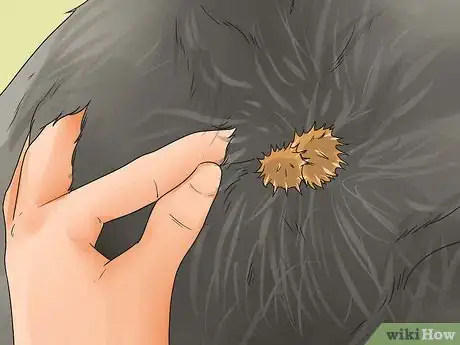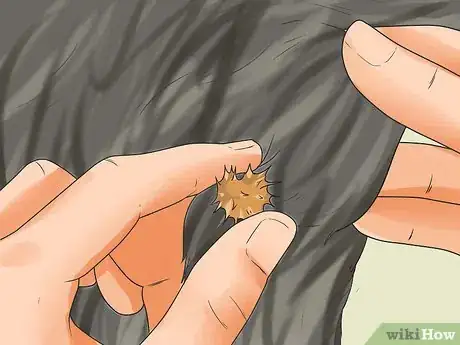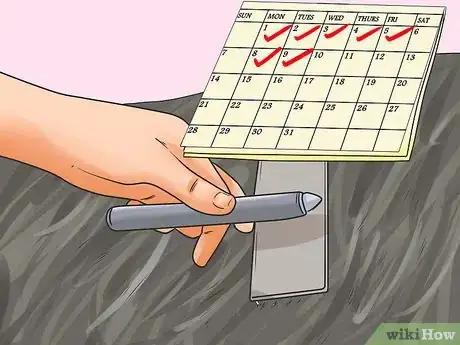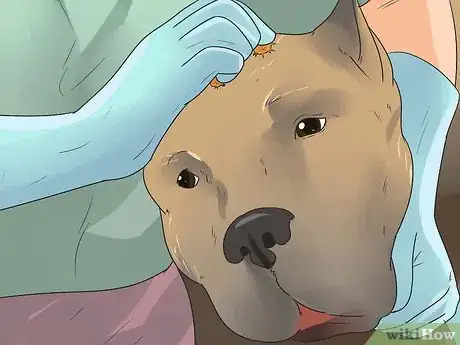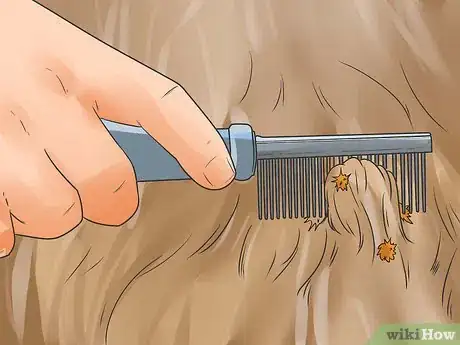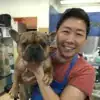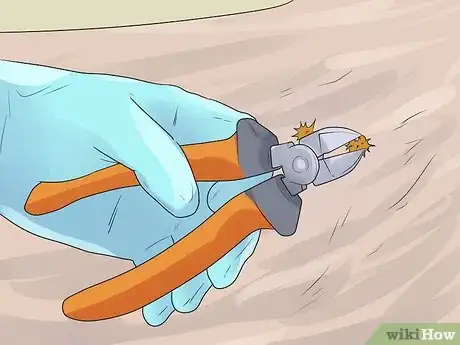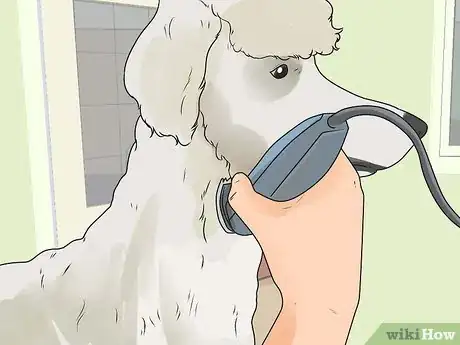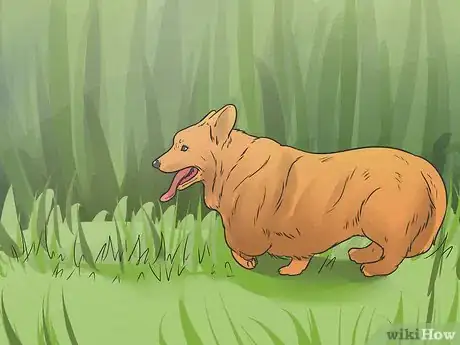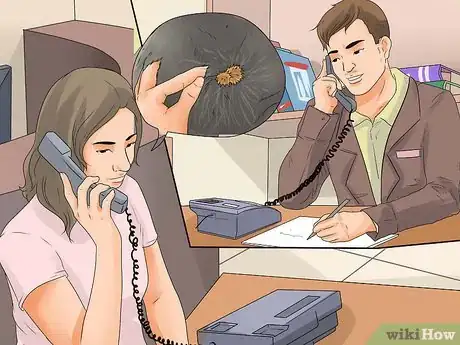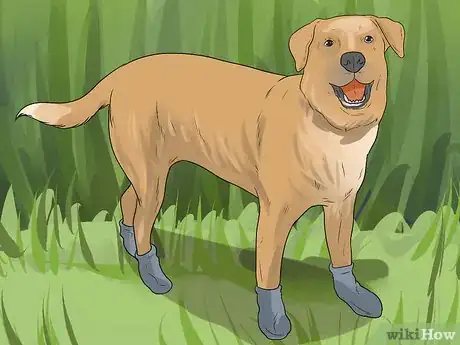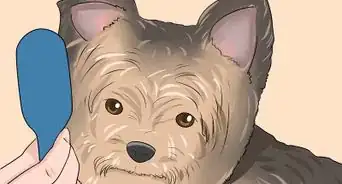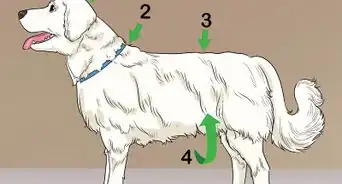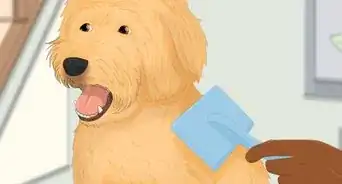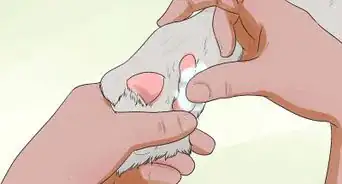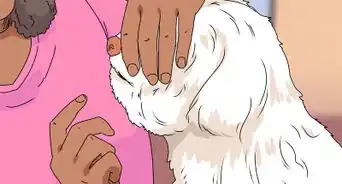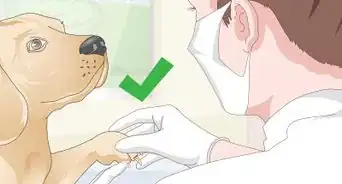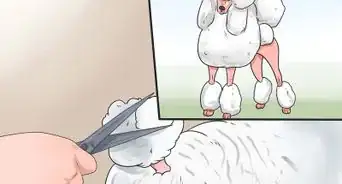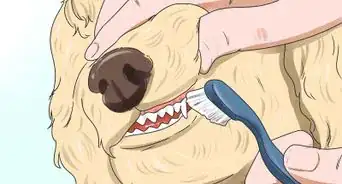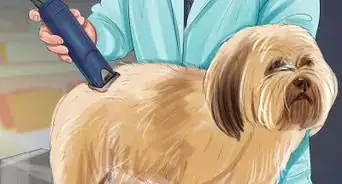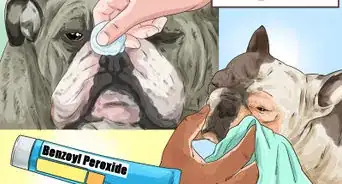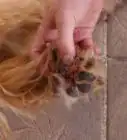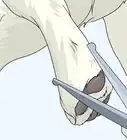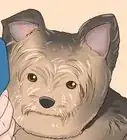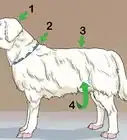This article was co-authored by Lancy Woo. Lancy Woo is a Certified Pet Groomer and the Owner of VIP Grooming, a pet grooming salon based in San Francisco, California. VIP Grooming has served San Francisco for over 35 years. Lancy received her pet grooming certification from the WWPSA (Western Word Pet Supply Association). VIP Grooming has been voted "Best in the Bay" in 2007, 2010, 2011, 2014, 2017, 2018, and 2019 and won Bay Woof’s "Beast of Bay" in 2014. In 2018, Lancy's work contributed to VIP Grooming's acceptance onto San Francisco's Office of Economic and Workforce Development's Legacy Business Registry.
This article has been viewed 132,728 times.
After a hike or a day running around in a field, many dogs manage to get burrs embedded in their fur. These burrs can range from numerous pinpoint-sized burrs to singular large burrs. Regardless of size, they can be difficult to remove and painful for the dog. Thus, you should take the time to learn how to remove these burrs without hurting your dog.
Steps
Finding Burrs
-
1Identify what a burr looks like. A bur is a seed that has a hook or teeth on it. These teeth or hooks are designed to latch onto a passing animal’s fur, as a means of dispersing the seeds elsewhere. Burrs come in all shapes and sizes but they all are seeds that attach themselves to animals.
- Plant awns are similar to burrs except they are bristle-shaped seeds that are shaped like a fish hook. Both awns and burrs attach to animals and their removal is the same process. In the case of awns, however, the seeds can physically work their way into a dog's skin, causing pain, infection, and, in extreme cases, death.
-
2Look for burrs on your dog's body. Both burrs and awns can latch on anywhere in your dog’s body. If your dog runs into a weedy, grassy, or wooded area carefully check the following spots:
- Ear flaps
- Nose
- Eyes
- Armpits
- Under the tail
- Between each toe and the toe pads
Advertisement -
3Be particularly vigilant about looking for burrs during the end of the growing season. This is most dangerous time for burrs and awns, as this is when plants dry out and are ready to shed their seed packets. During this time of year it is best to comb your dog out daily to eliminate any burrs.
Removing a Burr
-
1Remove visible burrs. Use your fingers to remove any loose burrs or awns from the surface of your dog's coat. Be very gentle, remembering that the dog may not like you pulling at its fur.
- Try to remove the burrs by detangling the fur around it with your fingers.
- You may need to wear gloves to avoid getting pricked, particularly with the harder, spike-like burrs.
-
2
-
3Break tough burs into pieces. You can use a pliers to crush the burr head, to break it up into smaller pieces. This should make it easier to remove.[3]
- Be careful with your fingers and your dog's skin when attempting this. You don't want to pinch either.
-
4Cut out stubborn burrs. Sometimes, especially in long-haired dogs with undercoats that are deeply tangled, the burrs will need to be shaved or cut off. This should be done very carefully, as the skin can be burned by hot clipper heads or cut by sharp scissors.[4] [5]
- A good way of doing this is to work a comb under the tangle and then clip or cut above the comb. This can help protect the skin from injury.
- If you are hesitant to cut the burrs out of your dog's coat, take it to get done by a groomer. They should be skilled at this safely cutting your dog's fur.
Preventing Burrs
-
1Keep your dog out of weedy or high grass areas. Keep your dog on a leash when going for walks, so it cannot run into burr or weed patches. This is particularly important after the end of the growing season, when seeds are ready to fall off the plant.
-
2Be particularly vigilant about not letting your dog inhale burrs or awns. Of particular danger are awns that enter the dog’s nose or mouth while it’s running through plants with awns. During the breathing process these can be inhaled or swallowed. The awns will latch onto respiratory or gastrointestinal tissue, just like the hair, causing serious injury or even death.[6]
- There are mesh hoods that attach to collars to keep the awns and burrs away from the entire face.
- If you suspect an internal awn contact your veterinarian as soon as possible. You will want to have your dog examined by a professional. It’s almost impossible to find these using any regular tools (ultrasound or X-rays) so it’s hard to diagnose and treat. The only symptoms are lathery and general poor health.[7]
-
3Protect your pet. Pet stores and hunting stores also carry protective vests for dogs that will prevent burrs and awns from reaching the protected area. If you are not able to keep your dog out of areas with weeds and high grasses, such as if your dog is a hunting dog, you should invest in some protective gear for your dog.
- Boots are also available, but many dogs object to these, especially if they are trying to run.
References
- ↑ https://www.cesarsway.com/dog-care/flea-and-tick/fleas-and-ticks-and-burrs-oh-my
- ↑ Lancy Woo. Certified Pet Groomer. Expert Interview. 26 February 2020.
- ↑ https://www.cesarsway.com/dog-care/flea-and-tick/fleas-and-ticks-and-burrs-oh-my
- ↑ Lancy Woo. Certified Pet Groomer. Expert Interview. 26 February 2020.
- ↑ https://www.cesarsway.com/dog-care/flea-and-tick/fleas-and-ticks-and-burrs-oh-my
- ↑ http://veterinarymedicine.dvm360.com/cvc-highlight-hunt-grass-awns?rel=canonical
- ↑ http://www.outdoorlife.com/blogs/gun-dogs/2011/08/gun-dog-health-protect-your-hunting-dog-grass-awn-infections
About This Article
To get burrs out of dog hair, use your fingers to gently loosen any burrs that are on the surface. You may need to wear gloves while you’re doing this. If a burr is tangled into the dog’s fur, try using a wide-toothed comb to loosen it, starting at the edge of the tangle and working your way in. For really stubborn burrs, crush them into pieces with a pair of pliers, but be careful not to pinch the dog. If that doesn’t work, you’ll probably need to carefully cut out the burr with clippers or scissors. Keep reading for tips from our Veterinary co-author on how to prevent your dog from getting into burrs!
